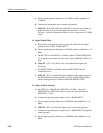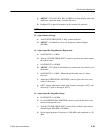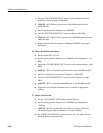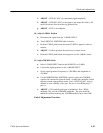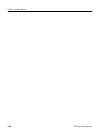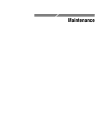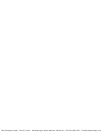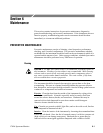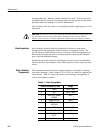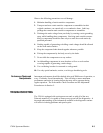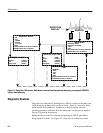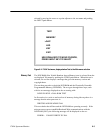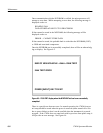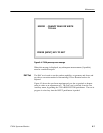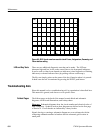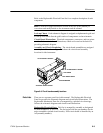
Maintenance
6-2
1705A Spectrum Monitor
detergent and water. Abrasive cleaners should not be used. If the circuit board
assemblies must be removed for cleaning, follow the instructions for removal/re-
placement under the heading of Corrective Maintenance.
After cleaning, allow the interior to thoroughly dry before applying power to the
instrument.
CAUTION.
Do not allow water to get inside any enclosed assembly or component. Do
not clean any plastic materials with organic cleaning solvents, such as benzene,
toluene, xylene, acetone, or similar compounds, because they may damage the plastic.
After cleaning, carefully check the instrument for defective connections,
damaged parts, and improperly seated transistors or integrated circuits. The
remedy for most visible defects is obvious; however, if heat--damaged parts are
discovered, determine the cause of overheating before replacing the damaged
part, to prevent additional damage.
Periodic checks of the transistors and integrated circuits are not recommended.
The best measure of performance is the actual operation of the component in the
circuit.
This instrument contains electrical components that are susceptible to damage
from static discharge. Static voltages 1 kV to 30 kV are common in unprotected
environments. Table 6--1 shows the relative static discharge susceptibility of
various semiconductor classes.
Table 6- 1: Static Susceptibility
Relative Suscepti bility Levels Voltage
1 CMOS 100 V -- 500 V
2 ECL 200 V -- 500 V
3 SCHOTTKY SIGNAL
DIODES
250 V
4 SCHOTTKY TTL 500 V
5 HF BIPOLAR TRAN-
SISTORS
400 to 600 V
6 JFETS 600 to 800 V
7 LINEAR CI RCUITS 400 to 1000 V est.
8 LOW POWER SCHOTT-
KY TTL
900 V
9 TTL 1200 V
Visual Inspection
Static- Sensitive
Components



